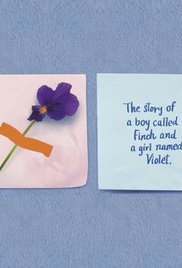Review: All the Bright Places “attracts young readers”

TRL’s Madeline Sanders says even though “All the Bright Places” is “cheesy” at some points, the love story prevails as “captivating”.
November 3, 2016
“All the Bright Places,” the first novel by Jennifer Niven, gleams with themes of love, fear, hopelessness, tragedy, and life following two adolescents in a story based on the author’s past. Similar to tragedies such as in “The Fault In Our Stars” by John Green, “All The Bright Places” will appeal to fans of young-adult novels. Also like Green’s novel, Niven’s book will become a major motion picture in 2018, and will also require a box, or multiple boxes, of tissues.
Violet Markey was the stereotypical popular girl who went to parties, dated the jock, and had everything set into place for her future career in writing, that is until a car crash took the life of her role model, best friend, and sister Eleanor.
After this, overcome by pain and suffering, she finds herself on the ledge of her school’s bell tower where she meets Finch, a death-obsessed “freak,” who is there for the exact same reason as Violet: to jump. This meeting starts the charming relationship at the center of the book.
After being assigned a geography project, Finch and Violet pair up and go on adventures and wander to places all around their home state of Indiana. The wanderings of the two were the greatest parts of the book. From an abandoned swimming hole to a charming bookmobile, they were realistic adventures set in real places in Indiana that the author put in to match Violet and Finch’s perfect-yet-tragic love story. Fans of the book are encouraged to go to the places traveled to in the novel and become a part of the story.
The wanderings spark their love. Their relationship is attractive to young readers because it is practical and realistic, yet captivating and lovely; it makes the readers want to fall in love themselves. Although it may be cheesey, this was the best part of the story. The fact that the characters are simple people who found each other in atypical “Small Town, USA” also added a sense of realism and drew away from traditional love stories of princes, princesses, and glass slippers.
Throughout the book, Finch attempts suicide multiple times. Because of the author’s writing style of switching point of view every other chapter, the reader gets to peer inside the mind of a bipolar and depressed teen. This was an interesting contrast to the love stories that are all happy go-lucky and extremely unrealistic. With this, the reader gets a taste of the real world. As a result, the story is deepened, and the reader becomes more attached to the characters. Although it is interesting to see that kind of thought processing, it was depressing to read and brought down the mood of the story. Readers may want to stay clear of the novel if they think it may trigger depression in themselves.
“All the Bright Places” needs to be read by anyone who enjoys tragic love stories and is not afraid of tears.



